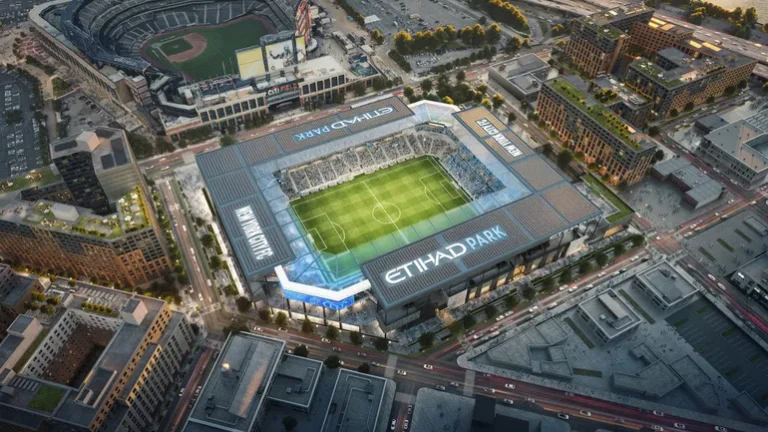A billion dollar push to revitalize New York City neighborhoods will change how the Big Apple is built and who gets to build it.
More than $1 billion in construction projects, including about $270 million in transformative improvements at Willets Point, Queens, will be done under two new project labor contractsaccording to an announcement by New York City Mayor Eric Adams.
The Willets Point redevelopment includes 2,500 affordable homes, more than 20,000 square feet of retail space, a 250-key hotel and the city’s first soccer-specific stadium, which is being privately funded by the New York City Football Club.
PLAs reached with the Building & Construction Trades Council of New York, an umbrella union organization, include design-build delivery to accelerate timelines, while incorporating procurement targets for underserved communities and contracts for minority-owned businesses and women
Other projects covered by PLAs include:
- A $150 million greenway along the East Side Coastal Resiliency Project in Lower Manhattan.
- A $40 million deep sewer project in Brooklyn.
- A $240 million bridge and road improvement project on the Belt Shore Parkway in southern Brooklyn.
- A $100 million pier and bulkhead reconstruction project at the Port Richmond and Rockaway Wastewater Resource Recovery Facilities in Staten Island and Queens.
Those PLAs also set a framework for similar agreements that could support $50 billion in future city projects, Adams said.
For example, the New York City Economic Development Corporation has signed a letter of intent with BCTC of New York to negotiate additional PLAs for the Hunts Point Produce Market, the Kingsbridge Armory redevelopment, and the Kips Bay Science Park and Research Campus (SPARC). a cumulative $1.88 billion in construction work.
Willets Point
The Willets Point redevelopment, which the city highlighted in its announcement, aims to revitalize an industrialized area of auto and junk shops that inspired the work of F. Scott Fitzgerald. Valley of Ashes in “The Great Gatsby.”.”
“The work being done at Willets Point is a generational opportunity to transform what was once a landfill into a vibrant community that is a model of public-private partnership,” said Andrew Kimball, president and CEO of New York City Economic Development Corp. “We are showing our commitment to increasing union work.”
Turner Construction will lead the $780 million construction of the New York City Football Club’s 25,000-seat football stadium, while AECOM is part of the wider project team supporting the redevelopment.
Design-build delivery
According to the statement, the design-build delivery method marks a change for New York City, where design and construction are included in a single contract. The approach aims to reduce project timelines, streamline oversight and increase efficiency compared to traditional bid-building models, Adams said.
In the meantime, PLAs will help drive these large-scale infrastructure improvements while creating equitable workforce opportunities, said Gary LaBarbera, president of the New York BCTC.
“Project labor agreements make projects more efficient. They actually save money in the capital plan and in the capital budget, which creates more opportunities,” LaBarbera said during a press conference. “This is not a construction job. This is a path to the middle class, building a stronger middle class, a stronger blue-collar middle class.”
The agreements also signal a turning point in the relationship between unions and MWBE, LaBarbera said. Historically seen as incompatible, unions and MWBEs are now actively working together under Mayor Adams’ administration to ensure wider participation in large-scale urban projectshe said
Initiatives include connecting MWBE contractors with unions and supporting them through mentoring programs. This collaboration is expanding prize opportunities for those companies, said Michael Garner, the city’s chief diversity officer.
“Access to contracts equals job creation in those communities of color that have historically been excluded,” Garner said. “It also equals ownership opportunities for business owners, better educational opportunities and health care options for their respective families.”

